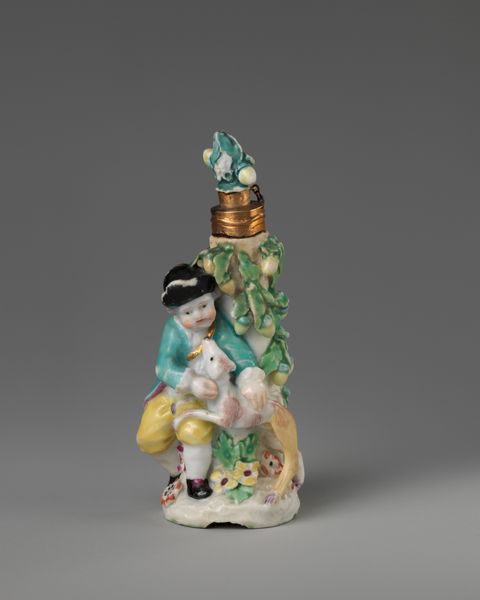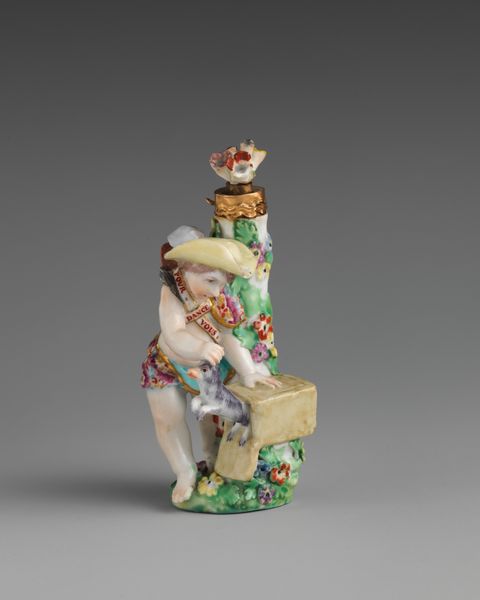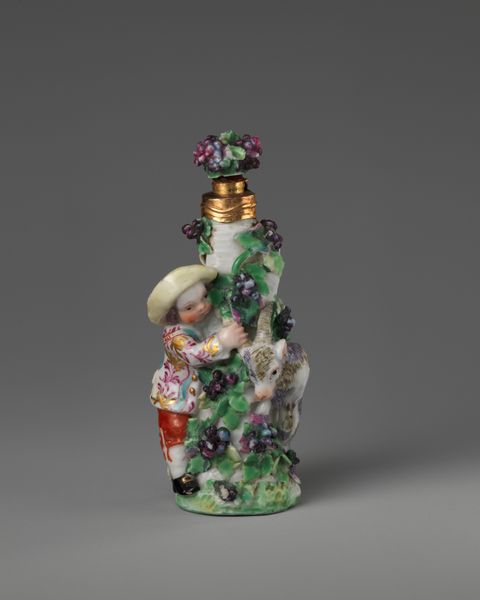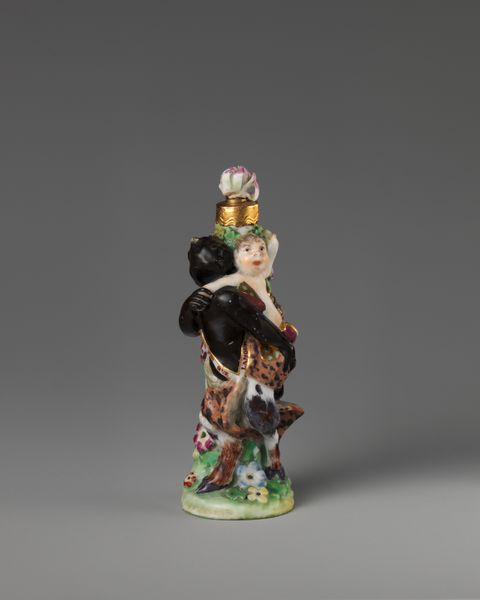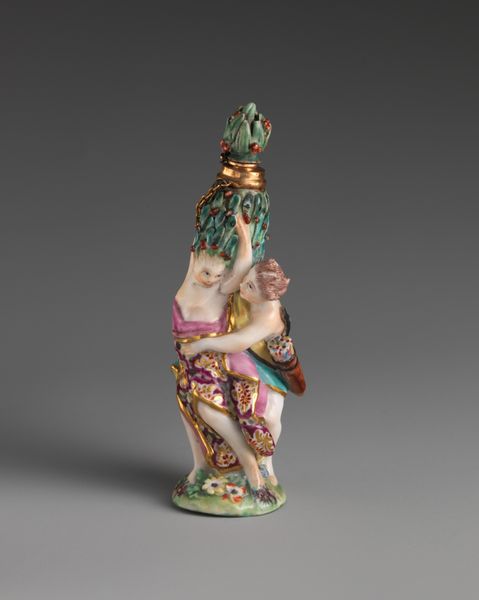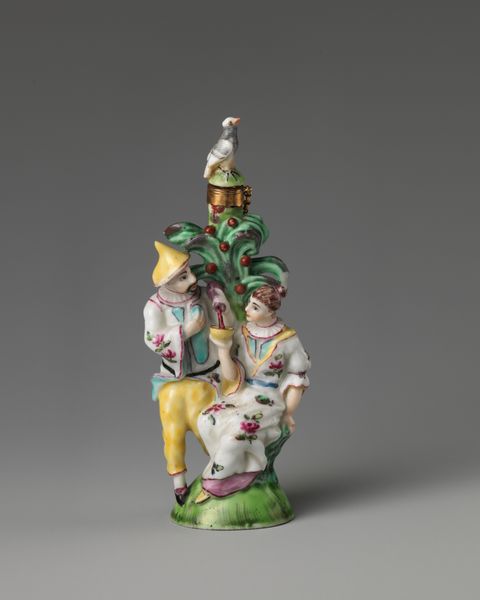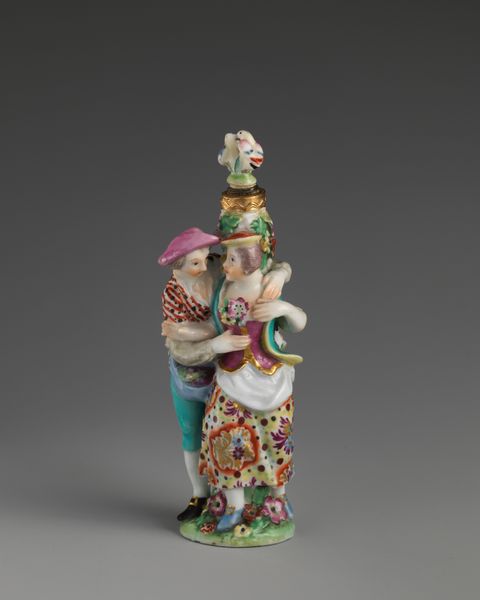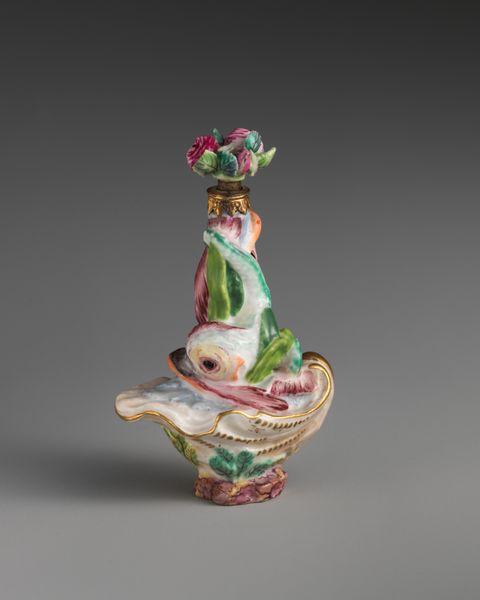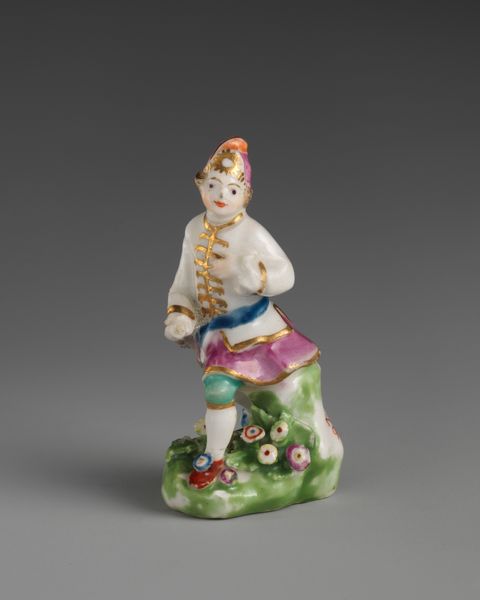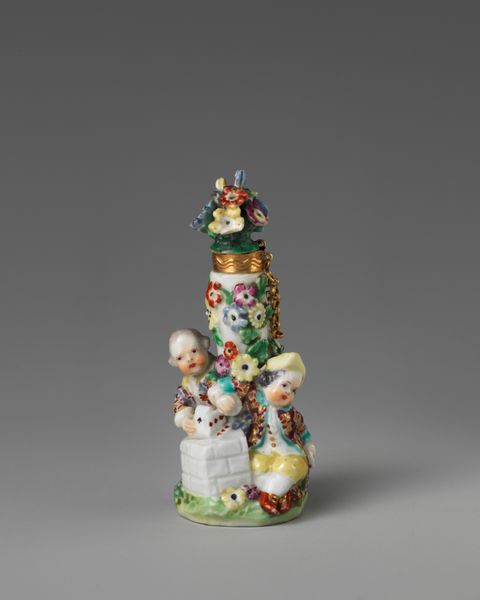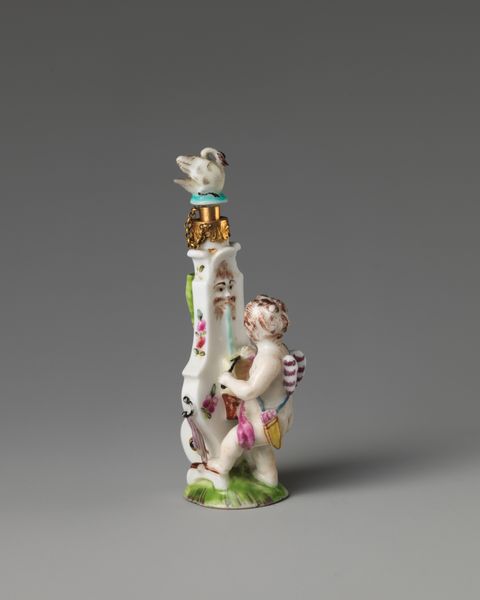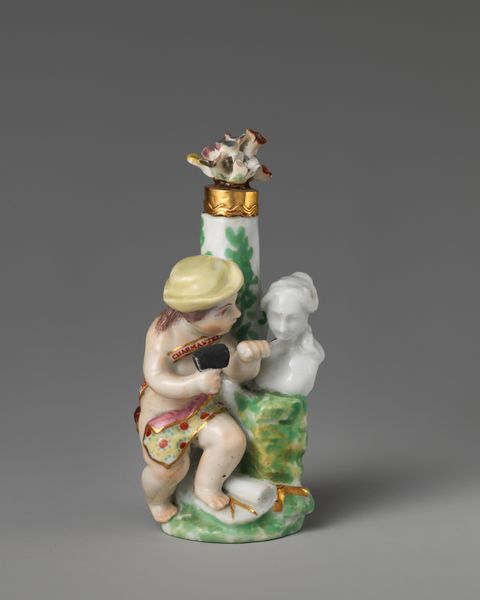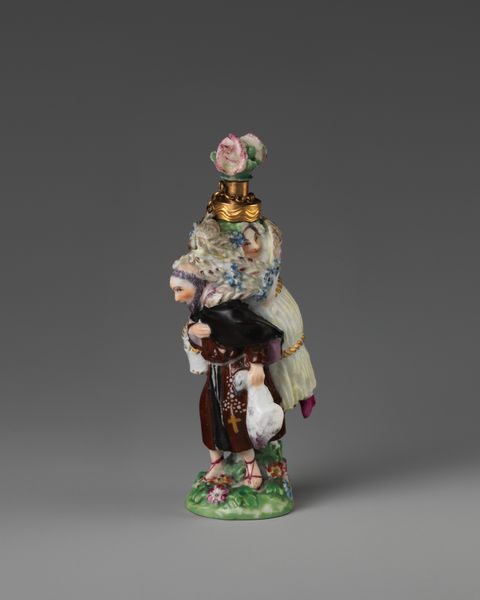
Boy letter-writer and girl in group 1754 - 1764
0:00
0:00
ceramic, porcelain, sculpture
#
girl
#
ceramic
#
flower
#
boy
#
porcelain
#
figuration
#
sculpture
#
genre-painting
#
decorative-art
#
miniature
#
rococo
Dimensions: 2 7/8 × 1 1/2 in. (7.3 × 3.8 cm)
Copyright: Public Domain
Curator: Here we have a charming porcelain sculpture titled "Boy letter-writer and girl in group," created by the Chelsea Porcelain Manufactory between 1754 and 1764. Editor: It's whimsical. The eye is immediately drawn to the contrasting textures—the smooth porcelain figures against the matte finish of what looks like a little well. It's balanced but with a distinct upward movement, those florals leading the eye upwards. Curator: The rococo style is evident in the delicate details and playful subject matter. It really encapsulates the themes valued at the time. Genre scenes like this speak volumes about 18th-century societal ideals and childhood innocence. Notice the young boy, seemingly preoccupied with writing, while the girl playfully peeks around the floral covered column. Editor: Absolutely. There's a strong use of semiotic codes embedded in the flowers too. It begs us to decode a subtle system of desire and coquetry. Curator: Beyond aesthetics, this piece offers insights into gender roles during the Enlightenment. Is the boy meant to embody diligence and intellectual pursuit, and is the girl a passive, beautiful observer? How do class dynamics play into it when porcelain production, itself, relies upon exploited labour in a different part of the world? The perfume bottle on top might reveal it as a commodity designed for wealthy aristocratic clients. Editor: And what a detail! The materiality here, the tactile quality of the porcelain, it demands that we remember Walter Benjamin’s aura and the history of decorative art objects. The slight asymmetry also makes this object especially captivating. The gold accents highlight both sculptural detail and function as a luxurious enhancement to the sculpture. Curator: This is a tiny piece but raises significant points regarding consumerism, societal norms and even economic realities that underpinned such production in Europe, it seems that playful imagery hides complex meanings that invite further exploration! Editor: Indeed. The work encourages one to investigate how form and material interweave to reflect those intricacies and values in eighteenth-century aesthetic culture.
Comments
No comments
Be the first to comment and join the conversation on the ultimate creative platform.
